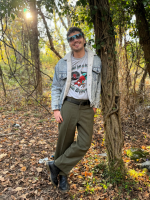Black Americans may have a better understanding of their roots to Maryland’s western Chesapeake Bay Shore with new research coming out of the genetics company 23andMe.
The company is now able to connect people to the community of enslaved people who were living in that area starting around 1619.
That community has distinct characteristics and the DNA connections can help Black Americans find long lost ancestors or relatives that would have previously been lost due to slaveholders failing to record the familial details of the people they enslaved.
“People in this Genetic Group report ancestors from the cities of Baltimore, Washington, Annapolis, Upper Marlboro, Frederick, La Plata, Bowie, Huntingtown, York, Lexington Park, Damascus and Avenue,” a 23andMe report stated. “Popular foods include seafood dishes like crab cakes and African-influenced peanut soup reflecting a blend of local ingredients and African influences.”
Steven Micheletti, a senior scientist at 23andMe, said small signatures in DNA show the connections between Black Americans from the area.
“Certain groups of people share more DNA with each other, because their ancestors generally experience some form of reproductive isolation at a certain point in time,” Micheletti said. “Reproductive isolation can come from many different processes, but we know historical events like war, migration or slavery leads to segregation of populations, and therefore there's genetic signatures.”
Recent DNA research has created a new world for Black Americans to find ancestors that otherwise would have been lost to the tragedies of slavery.
Last year, a landmark study connected family members of shared ancestors who worked in an iron furnace in western Maryland.
"This work represents a step forward for enabling further study of the biogeographic origins and genetic legacy of historical African American populations, particularly in cases where documentation is limited, as is common," says Henry Louis Gates Jr., director of the Hutchins Center for African & African American Research at Harvard University and an author of the study.





